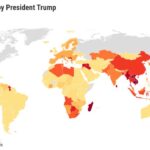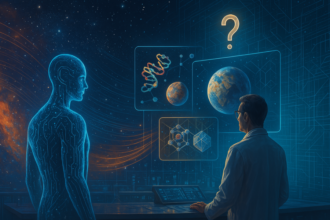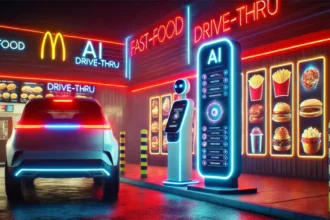Imagine a world where artificial intelligence (AI) not only drives and recognizes faces, but also decides which government jobs are essential and which government jobs should be cut. Once considered a distant possibility, this concept is proposed by Elon Musk, one of the most influential figures in technology.
Musk aims to revolutionize how the US government operates by using AI to streamline federal operations through his latest venture, the Department of Government Efficiency (DOGE). When this ambitious plan is considered, important questions arise. Can AI really trust decisions that impact people’s work and lives?
Such decisions have a significant impact on the future of work in the public sector. With the development of Mask’s vision for a more efficient government, it is essential to think about the broader impact of relying on AI to change the federal workforce.
What is the Elon Musk’s Doge Initiative?
The Doge initiative is Elon Musk’s ambitious plan to modernize and make the US federal government more efficient using AI and blockchain technology. The main goal of Doge is to reduce waste, improve government functions, and ultimately provide better service to its citizens. Known for his innovative approach to technology, Musk believes the government should operate with the same efficiency and agility as the tech companies he leads.
Simply put, the DOGE initiative is trying to streamline a variety of government processes, including budgeting, resource management, and labor planning. One of the most prominent aspects of this plan is Musk’s proposal to use AI to assess federal employment, potentially eliminating positions that are deemed unnecessary, inefficient or outdated. This is part of a bigger vision for not only reducing costs, but also modernizing how the entire government operates.
Musk’s involvement with Dogecoin, a cryptocurrency that began as a joke but has attracted a lot of attention, is also linked to the initiative. Dogecoin was initially considered a meme, but Musk has helped bring it into the mainstream and is currently planning to use cryptocurrency and blockchain technology to enhance transparency, efficiency and security in DOGE implementations. AI plays a central role in managing resources, including human resources, within government.
The initiative has already sparked debate, particularly about mask plans to reduce the size of the federal workforce to around 75%. This ambitious proposal could have a major impact on major government agencies, one of the goals of spending reductions and restructuring. These dramatic cuts have led to the impact on federal employees and the services they provide, raising questions about the role of AI in making these decisions and the broader impact on the future of government work.
The Doge initiative also reflects the growing role of AI in government operations. While AI has already been applied in areas such as fraud detection, predictive policing, and automated budget analysis, the DOGE initiative takes this a step further by proposing AI’s involvement in managing the workforce. Some federal agencies are already using AI tools to improve efficiency, such as analyzing tax data, detecting fraud, and helping with public health responses. The Doge initiative expands this by suggesting that AI can not only improve services, but also completely restructure workforce management.
Recent updates report using AI systems to conduct spending reviews and government operations audits. The goal is to identify inefficiencies in both spending and staffing, and AI could flag roles and programs that do not align with government priorities. While some view this as an opportunity to reduce waste, others worry about the wider impact on workers and the future of government services.
The role of AI in rationalizing government work: efficiency and automation
The fundamental idea behind using AI to reduce federal employment is to analyze the performance and productivity of various aspects of government operations, particularly employees across the sector. By collecting data on job roles, employee output, and performance benchmarks, AI can help identify areas where automation may be applied, and areas where positions can be eliminated or integrated for better efficiency. For example, AI can flag redundant roles due to overlapping inter-departmental responsibilities or due to liability that has become obsolete due to technological advances.
In the private sector, AI is already widely adopted for similar purposes. Companies use AI to automate repetitive tasks, optimize operations, and handle the employment and employee management aspects. Now, AI is slowly expanding into public services. The Elon Musk’s Doge initiative proposes taking this trend a step further and adopting similar levels of efficiency and cost-cutting measures. However, there are important questions. Can AI replace human judgment in labor decisions, or are there any factors that require a more nuanced approach?
Designed to identify cut jobs, AI systems focus on several key factors.
- Work productivity: How much value does a particular role bring to the overall functioning of government? When employee output falls below a certain threshold, AI can flag roles as redundant.
- Possibility of task automation: Does this role include repetitive tasks that the machine or software can automate? Positions with easily automated tasks, such as data entry and essential administrative tasks, can be flagged for elimination or reallocation.
- Cost Benefit Analysis: What are the economic impacts of maintaining a position? AI was able to weigh federal employee salaries against the value they contributed and determine whether costs were justified in terms of departmental objectives.
For example, an administrative role that includes simple tasks can be flagged as consumables. At the same time, more complex, human-centered jobs such as healthcare and social services can be more difficult for AI to assess. These roles require areas where AI still faces major limitations: emotional intelligence and contextual understanding.
Ethical trade-offs: AI-driven reduction bias, transparency, and human costs
The federal government’s initiative to use AI in job cuts raises serious ethical concerns, particularly around the balance between efficiency and human values. Elon Musk’s Doge initiative promises a more streamlined, technology-driven government, but the risks of bias, lack of transparency and dehumanization need to be carefully considered, especially when people’s work is at stake.
One of the most concerning issues is bias. AI systems rely on data to make decisions, and if the data reflects historical biases, these biases can be reproduced by algorithms. For example, if past employment practices support a particular demographic group, AI could inadvertently prioritize maintaining those groups, further deepening inequality.
Another concern is transparency. AI models, especially machine learning-based models, often function as Black Boxthat is, it is difficult to understand how to reach a particular conclusion. If AI determines that a job is redundant, it can be difficult to know which factors influenced the decision, whether based on productivity scores, costs, or other metrics. Without a clear explanation, employees and policymakers remain in the dark, especially in sectors like governments that place emphasis on fairness and accountability.
The issue of privacy also plays an important role in the discussion. To assess roles and performance, AI requires access to sensitive data such as employee reviews, payroll history, and internal communications. Blockchain technology can provide a secure way to process this information, but it still has risks.
Advocates argue that AI can save billions by reducing unnecessary roles, but the human costs of such decisions cannot be ignored. Reducing the size of the federal workforce, particularly for hundreds of thousands of jobs, could destabilise the local economy that relies on federal employment, particularly in its management and support role. As a result, communities can see a decline in consumer spending and social services can be tense as displaced workers struggle to find new opportunities. Even if mask plans include reinvesting savings in sectors like healthcare, the challenges of the transition of displaced workers remain a major gap in the proposal.
Despite these concerns, there is a valid debate for using AI in federal employment cuts. AI helps make the process more objective by targeting inefficiency rather than affecting decisions. Automating repetitive tasks such as form processing frees human workers to focus on more complex and public roles. Additionally, integration of blockchain technology could provide taxpayers with real-time transparency about how government funds are allocated.
However, there are quite a few drawbacks. AI lacks the emotional intelligence to understand the human impact of layoffs, such as the value of morale and institutional knowledge. Many workers displaced by AI-led decisions may not have the skills necessary for the new roles created by technological advances, leading to long-term unemployment. There is also the risk that centralizing workforce decisions in AI systems could potentially become an attractive target for hackers.
It is essential to implementing safeguards for a Doge initiative to be successful. This includes third-party auditing of AI training data and a decision-making process to ensure fairness. The obligation to explain how AI will reach layoff recommendations also helps to ensure transparency. Additionally, providing reskilling programs to affected workers can help mitigate the transition and develop the skills needed for emerging technical roles.
Conclusion
In conclusion, Elon Musk’s Doge initiative presents an interesting vision for a more efficient and technology-driven government, but it also raises great concern. While the use of AI in federal employment reductions can streamline operations and reduce inefficiencies, there is also the risk of deepening inequality, undermining transparency and ignoring the human impact of such decisions.
To ensure that the initiative benefits both the government and its employees, careful attention must be paid to mitigating bias, ensuring transparency and protecting workers. Implementing safeguards such as third-party audits, clear explanations of AI decisions, and reskill programs for displaced people can realize the possibility that AI will improve government operations without sacrificing equity or social responsibility.









